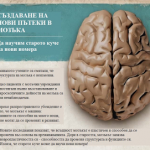Taking care of our psycho-emotional needs for better sadhana

Our psycho-emotional interface is very complex. Our present personality is a culmination of experiences we have encountered since time without beginning. Most of us carry around uncountable wounds from this lifetime alone and our characters consist of a mixture of tendencies that imprison us in a labyrinth of obstacles in our spiritual journey. It is the intent of this article to present an effective way to transform the labyrinth that binds us into a map that guides us.
The information given in this article is intended to be applied toward our own inner dynamics, creating an opportunity to look deeper at our main tendencies and psycho-emotional wounds that give shape and energy to our current anarthas. It is not meant to stimulate our judgmental mentality or lull us into complacent acceptance of our undesirable thoughts and behaviors, but rather elicit self-reflection and inspire us to be more curious and compassionate toward our inner world.
Approaching our anarthas
If we, as sadhakas, want to reach the desired stage of nishtha – steady and enthusiastic devotional life – we first need to go through what is known as the stage of unsteady practice (anisthita-bhajana-kriya). If we consider our material consciousness as a lake, then this initial stage can be seen as a stirring of these waters, disturbing ancient layers of mud and silt – of old ideas and patterns of behavior, of buried traumas and our learned responses to them, which at one time served us well, but that no longer serve us on the path of bhakti. In the clouds of muddy waters that encircle us, the biggest fish will rise to the surface, indicating that the process of anartha-nivritti, the clearing of our anarthas, has begun
What does the word “anartha” mean? Our contemporary acharyas give the definition of anartha in a very concrete way–anarthas are misplaced values and useless habits developing out of our misplaced values. By nature, we assign value and give energy to things, as well as to models of thinking and behaviors. There is nothing wrong with this, in and of itself; this is what we do. However, in our conditioned state, those things to which we prescribe value to are those very things which keep us in the grip of our material identification.
Such anarthas can be gross, such as seeking material enjoyment, addictions to substances, to power, prestige and possessions or subtle ones such as misconceptions, offences, criticism, prejudice, fear, anger, and fanaticism. In his Bhajana-rahasya Bhaktivinoda Thakur gives a wonderful summary of the different types of anarthas, dividing them in four categories:
1) illusion about spiritual knowledge (tattva-vibhrama) – misconception of one’s true self and the Supreme, misconception of the goal of life and the means to attain it, misconception of that which is antithetical.
2) desire for illusory ends (asat-trsna) – material enjoyment, supernatural powers and liberation from birth and death
3) weakness of heart (hrdaya-daurbalya) – attachment to things unrelated to Krishna and His service, duplicity, envy, desire for name and fame.
4) all kinds of offenses (aparadha) – offences against the Holy Name, offences made during service and worship, offences against Vaiṣṇavas, the Holy Dhām and other souls.
As a sadhaka, wanting to rid ourselves of such “wrong-doings”, these anarthas could easily be considered as enemies. Let’s consider what takes place if we approach our anarthas as if they are indeed our enemies.
How do people deal with their enemies? They try to fight them or escape from them. These are the two main reactions of the stress responses conditioned by our body and nervous system – fight and flight. When we try to fight our anarthas, we attack them with all the willpower that we have. When we try to flee from them, we still fight them but in a passive way through ignoring, suppressing and escaping. It is quite common, as a consequence of either fight or flight, to end up experiencing stress, exhaustion, burnout, anger and auto-aggression, guilt, shame, lack of enthusiasm, apathy or a combination of these.
If we have attempted to deal with our anarthas and haven’t been successful up until now, but rather ended up with the afore-mentioned consequences, it could be beneficial to change our perspective of anarthas themselves–to stop considering them as our enemies. This is also recommended by Krishna in the Bhagavad-gita when Krishna warns Arjuna that it is disadvantageous to see anything in this world as an enemy. Such a mindset is a sign of our dualistic mentality and our material ego which constantly divides our world into “mine” and “not-mine”, into good and bad.
A positive approach
A different approach to our anarthas has been given by our acharyas. They suggest that we put our anarthas on our altar and worship them. This might sound a bit odd at first but what it means is that if approached in a particular way, our anarthas could be quite beneficial for us. It has been found that those things we do not like in ourselves, actually hold the key to our spiritual progress. As the ancient wisdom says, “The cave you fear entering holds the treasure you are seeking.” These treasures might be new insights and levels of depth, surrender, sincerity, humility, kindness, and compassion.
From this change in perspective arises a totally different process of clearing our anarthas. Instead, of fighting with them and trying to mentally wrestle and dominate them into submission, we can develop a nonviolent approach where we overcome our anarthas by accepting them as messengers and parts of ourselves that need our care. We learn to see them as manifestations of the material nature in need of compassion. We realize that we shouldn’t fight the material energy but show her respect as it is the energy of Krishna, and use it in his service. This fundamental knowledge is easily forgotten when it comes to our own personal material nature.
How anarthas can assist us
Our anarthas, rather than something needing to be hidden away, are like beacons that show the places inside us which have been hurt and are still hurting. They can lead us to the stored trauma in our subtle and physical body, created by our painful experiences in this material world. Beneath the anarthas are our emotions and feelings. If we continue to dig deeper we will find our needs and values, not only material ones but spiritual needs and values as well. Anarthas are like coping and defense mechanisms and have compensatory functions. This means that they are not some error or whim but an important part of our built-in safety and survival system. That is why fighting them doesn’t work. We need to take care of our needs which may have been affected by trauma or negative experience leading to psycho-emotional wounds.
Taking a closer look: Common traumas and the anarthas that follow
In the psychological literature, trauma is mainly defined as the response to a deeply distressing or disturbing event that overwhelms an individual’s ability to cope, causes feelings of helplessness, diminishes their sense of self and their ability to feel a full range of emotions and experiences.[i] Despite that the traumatic events could be of a different kind, as a result from them people go through five main inner experiences – rejection, abandonment, humiliation, betrayal or injustice – all of which could be experienced independently or in combination. This five types of experiences are classified by the famous psychologist and best-selling author Lise Bourbeau as the five major emotional wounds.[ii] In the therapeutic modality [iii] which I am practicing we make a parallel between these wounds, the different psychological schemas described in Schema Therapy[iv], and the five character types categorized in Body Psychotherapy.[v] The following analysis is based on this theoretical framework as well as on my personal experience and observations in the last five years during which I’ve been working as a counselling psychologist and practicing bhakti yoga. Below are outlined the models of thinking, feeling and behaving which these five emotional wounds promote and the way they may impact our spiritual life.
Rejection
Rejection means to dismiss a person as inadequate, unacceptable, or faulty. Rejection is a very deep trauma because the one who suffers from it feels rejected in his very being and above all in his right to exist. If people have such a dominant trauma they may be isolating themselves from others, unconsciously protecting themselves from their rejection. They are subconsciously deeply convinced that they will be rejected because they are flawed and not good enough. They feel there is something wrong with them and that they do not deserve to be loved. Deep down they believe that people will hurt, criticize and deprive them of attention, love and friendship. This results in a strong distrust of themselves and others.
This inner dynamic can lead to coping mechanisms in the form of dissociation, an attitude of withdrawal, emotional unavailability, social isolation, mistrust, and escapist mentality. People with such a psycho-emotional wound are prone to conditions such as depression, melancholy, apathy, frustration, paranoia, self-harm, substance abuse, and addictions of any kind.
In spiritual life, the deep wound of rejection can manifest as: difficulty in keeping close relationships with devotees; feeling fear that other devotees will see how faulty they are; projecting this fear of being rejected towards the spiritual master and Krishna. All of this can cause their hearts to close which could lead to seeking moksha rather than developing a loving service relationship, even to the point of setting sights on Brahman rather than Bhagavan.
People live their spiritual life more on the mental platform rather than on the platform of feelings. It’s hard for them to trust, to surrender, to show themselves sincerely and openly. They try to hide aspects of themselves so completely that it even becomes hard for them to see and feel what is inside of themselves. This dissociation and suppression can lead to superficiality or trying to live up to an image of ourselves which is far from reality.
Abandonment
Abandonment is to leave without intending to return. To be abandoned suggests that the person who was left may be helpless, without protection. Traumas from abandonment can manifest through loss or separation from a caregiver or a loved one. Many people who have such a psycho-emotional wound have problems with autonomy. People with an abandonment wound feel helpless, insecure, vulnerable, hesitant, codependent. They have a strong fear of loneliness and failure. This trauma can manifest also in irrational fears of illness, catastrophes, and accidents. It is the basis for the currently common development of panic disorders and generalized anxiety.
These people are most prone to victim-mentality. They could live their life from this victim position and think that what is happening to them is the fault of everyone else outside–other people, circumstances, fate, God, politicians–but never themselves.
In spiritual life this abandonment wound can manifest as blaming others for not supporting them enough, or not caring enough. People can be easily hurt and offended that no one is taking care of their needs. This can cause attention-seeking behaviors that can make the practice superficial or can evoke feelings of resentment towards devotees and Bhakti herself. This dynamic could lead to anarthas such as pointing out the faults of others, blaming, playing the role of a victim. It could be hard for such people to take proper responsibility for their process as they expect some authority to take care of them but not in a surrendered way, rather in a codependent way.
Humiliation
Humiliation is to reduce someone to a lower position in one’s own or others’ eyes, to make someone ashamed or embarrassed. When people suffer from this trauma they can develop tendencies such as approval-seeking, people-pleasing, subjugation and self-sacrifice motivated by fear and guilt. The child grows up with the feeling that if he is not obedient and well-intentioned, he will not be loved. Thus, he learns to suppress and ignore his feelings, emotions and needs.
In mature years, these people still center their lives around ways to receive the approval of others. Out of their desire to please others, they neglect their own needs and happiness. They are always smiling, accommodating and ready to serve everyone, as they feel this is their basic duty. Since such self-repressing behavior causes a counter-neglecting reaction in people, people with such tendencies resent being ignored and feel that no one thinks or cares about them the way they do for others.
In spiritual life and community, the humiliation wound can lead people to totally ignore their feelings and needs which often leads to repressed anger. This can further lead to outbursts of rage towards others or auto-aggression and feelings of shame and guilt. This inner dynamic can be an impetus to do a lot of service or practice in a way to be accepted, appreciated and approved. On the surface this can look like a person who is always ready to do anything and everything but gradually, if this is motivated by the humiliation wound, it could lead to burnout or resentment. People are not conscious about their adhikari and sincere about their current needs because they want to be something else in order to deserve the affection and love of others.
Betrayal
Betrayal is when someone you trust breaks that trust by doing something that hurts you. The most important concept related to betrayal is fidelity, the opposite of betrayal. Being faithful means keeping your commitments, being loyal and devoted.
People with this wound can exhibit controlling behavior, impulsivity, mistrust, insufficient self-control, entitlement, violation of the boundaries of others. Such people may feel very insecure and fragile on the inside, which promotes compensatory feelings such as grandiosity and the strong need to receive respect from others. In more severe cases people are materialistic and domineering, self-centered, controlling, seductive and manipulative.
In spiritual life, it is hard for such people to have good relationships with others because they are excessively preoccupied with their feelings and are not interested in the feelings and needs of others. They do not allow themselves to open up, to reveal themselves, to connect deeply and authentically, because they are afraid of their own weakness, vulnerability and humanness. They tend to impose themselves and control others. In the community, a person with this wound can be an authoritarian leader. Their anarthas are mainly connected with pride, prestige, power, and possessiveness. Such people conduct their practice superficially. Their main focus is to look good on the outside rather than being good internally. They have low self-control which leads to problems with impulsivity and discipline.
Injustice
Justice is defined as valuing, recognizing or respecting the rights and merits of everyone. As synonyms of the word “justice” we find: right, impartiality, incorruptibility. Therefore, a person who suffers from this wound is one who does not feel valued according to his true worth, who does not feel respected, or who does not feel that he is getting what he deserves. A person can also suffer from injustice when he feels that he receives more than he deserves.
People with this psycho-emotional wound can suffer from unhealthy perfectionism and rigidity. They did not receive genuine acceptance during their childhood, but were mostly corrected, disciplined and punished. From this they learned that in order to be worthy of love, they would have to demonstrate restraint, perfection and strength—showing no weaknesses or vulnerabilities. They have established strict rules and principles that they follow invariably in their lives, to the point of idealism and the development of over-morality, which strongly condemns anyone who is not like them and does not live by the same rules. Such tendencies disrupt the flow of empathy, deep acceptance, and the ability to receive tenderness, care, warmth and mercy.
In spiritual life people with this inner dynamic can lack understanding and sensitivity towards the bigger picture. Their rigidity can evolve into fanaticism and separatist mentality – only my group, my philosophy, my God, Guru, my way. People want to be perfect and to live up to their ideal at all costs but this is not driven by real faith and trust. Their perfectionism is motivated by the fear of the inner child, “If I’m not perfect, I will be punished and am unworthy of mercy”. Such tendencies can lead to excessive stress, anxiety, burnout, and apathy. Their anarthas manifest through the struggle to accept differences, possessing a critical mentality and attitude towards the “imperfect”–those who are not as strict or disciplined as they themselves are. For such people, it is hard to accept the unjust nature of mercy and continue to rely more on the laws of karma, rather than opening their hearts to trust.
Summary
It is important to recognize the connection between our theoretical understandings of the different anarthas, how they practically appear in our everyday life, and the deeper psycho-emotional dynamics from which they arise. This knowledge could help develop a new useful frame of reference and increase our self-reflection, which would naturally lead to more efficient ways to address and overcome the blockages on our spiritual path. Without this connection we could waste our precious energy and time trying to fight our anarthas in a way that actually gives them more power. In addition, by not addressing these issues directly, we could face the widespread phenomenon of spiritual bypassing— the tendency to use spiritual ideas and practices to sidestep or avoid facing unresolved emotional issues, psychological wounds, and unfinished developmental tasks. This phenomenon will be the topic of my next article.
[i] Levine, P. (2008). Healing Trauma: A Pioneering Program for Restoring the Wisdom of Your Body
[ii] Bourbeau, L. (2002) Heal Your Wounds and Find Your True Self
[iii] Genuine Psychotherapy – https://genuine-psychotherapy.com/en/home/
[iv] Young, J. Klosko, J. (1994). Reinventing Your Life
[v] Samsel, M. (n.d.). The Concept of Character in the Reich and Lowen Tradition







Be First to Comment